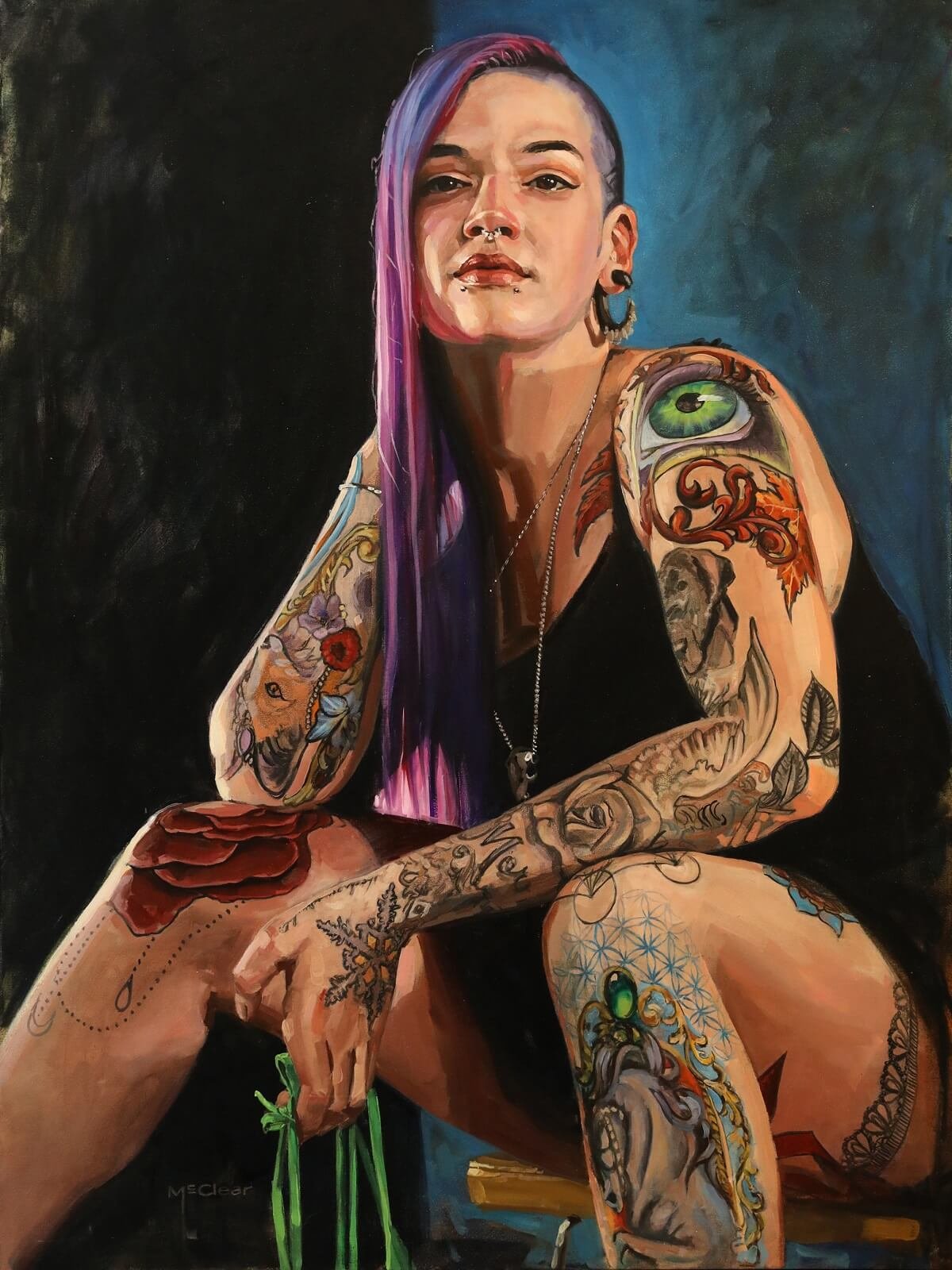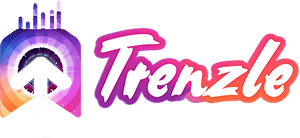No products in the cart.
A Conversation with Adam Mosca aka “Dispraze”, a Hip-Hop Artist
Adam Mosca, better known by the stage name Dispraze, is an Australian Hip-Hop artist from Hobart. He was introduced to...
No products in the cart.
Brian McClear is currently living and working in West Hartford, Connecticut. He has called New England his home for more than 25 years. Originally from Ohio, he received his BFA from Columbus College of Art and Design. Upon graduation, Brian moved to New England where he enjoyed a successful career as a freelance illustrator. Working closely with the area’s leading marketing firms, he eventually accepted a position with Adams & Knight, Inc. located in Avon, CT. During his 25-year tenure, the firm has grown to become a leader in the industry sparking results for a wide variety of national and international clients.
Even with his love of design and problem solving satisfied on a daily basis, Brian missed getting his hands dirty and has returned to painting with fervor. No longer separated from his work by mouse or screen, he relishes the direct connection to his canvas exploring shape, surface and connections through bold intuitive brush strokes — where the hand of the artist is clearly visible, are hallmarks of his work. Brian has exhibited nationally and his work can be found in galleries, museums and private collections.

Time travel.
I draw more a night — if I’m lucky, so I can paint in the morning.
Even though enjoy meeting people, teaching and working with kids, I’m basically an introvert and am perfectly content spending time alone.
I don’t have a clue.
I’d much rather travel to the past — There are definitely a few people I’d love to meet.
“Anime characters” — see above.
Representational art — depending on the day.
They took the time to share with me.
There are far too many — Older: Murch, Sargent, Chase, Kline… Contemporaries: Anyone making a life making their art.
Reminiscent.
I should have ordered the fish.
Just one?…


You’ve answered our rapid fire so well, Brian. Now, it’s time for our readers to know more about the person behind the art.
I began studying martial arts at 42. I almost didn’t. I was too old to start. It would take years to earn a black belt. Really, what was the point? Well, the years where going to pass anyway…
I always wanted to be an artist. After art school, I moved to New England where I worked as a freelance illustrator for 7 years or so eventually accepting a position with a leading marketing firm in the area. During my 25+ year tenure, the firm grew as did my responsibilities. As the years passed, my painting and creative pursuits outside of the office fell by the wayside. I thought that I needed large blocks of free time set aside to accomplish anything. Eventually, I came to the realization that it was ridiculous to wait for a “free day”. I began painting whenever I could, an hour here, two hours there hour there. As a result, I accomplished more than I ever had before, simply by taking advantage of small windows of opportunity. Now I paint “full-time” — and continue to strive to take advantage of every window of opportunity.
I love all kinds of art; realism, abstract, impressionism, modern — whatever. I gravitate toward representational art because that’s where I spend my time, but that being said, a Kline will always stop me in my tracks.
What makes good music? Musicianship to be certain, but if that was all there was to it, we’d have the same play lists. Beyond the facility of the artist, to me, “good art” is art that makes me feel something; contentment, outrage, awe, reflection. There’s an honesty to the work, an underlying sincerity of intent.


I include elements in my work for personal reasons. Not hidden per se, but hidden meanings. When people recognize why disparate things have been put together, there’s a connection. And when they see something completely different, something that’s personal to them, there’s a different kind of connection that’s really quite wonderful.
The first work back. Deciding what to do first after such a long break from painting, was a bit overwhelming. I was too concerned about the finished work and lost sight of simply enjoying the process of painting. There have been plenty of paintings since then that were challenging in their own way; the complexity, the subject matter, logistics — but those are challenges I enjoy working through.
Today, I worry much less about “what” I’m going to paint or “why” I want to paint it. I just paint.
My work is sometimes serious and sometimes a bit quirky. It often contains messages, puns and social commentary tucked between seemingly unrelated objects. My portraits seek to capture a gesture and mood that provide additional insight into the subject’s personality beyond their art.
Hopefully, my work strikes a chord with the viewer and challenges them to look beyond the surface whether considering everyday objects or the people they meet.


I love the spark of an idea. I’m exhilarated when I’m blocking in a new painting. I work from small loose thumbnail sketches and enjoy working things out on the canvas itself. I used to spend my days on a computer and my projects were very detail oriented. So, having the luxury to explore, and play with relationships while developing a painting is my favorite part of the process. I keep several canvases going at the same time, usually a portrait and a still life. When something isn’t quite working and I’m not sure where to take it, I’ll step to the other easel for a while. This keeps things fresh for me, and my time in the studio a gift.
Success at this point in my life, is the freedom to explore my ideas in ways that are meaningful to me. And if I’m fortunate, my work will be shared and become meaningful to others along the way.
Whether I’m painting a portrait or a still life, I’m fascinated by shape, texture and how things fit together.
I’m that person that buys a rusted hinge because of its frozen shape or carries home a stone because of its feel in my hand. My studio is brimming with objects (junk) picked up along the way. And there they sit until something reminds me of an object found days or years before. Something draws a connection between two completely different objects. And when paired, it’s precisely those differences that emphasize a commonality or imply a new meaning.


I really like having deadlines. Deadlines and goals keep me focused and pushing. If there’s a show date that I’m working toward, I’ll spend more time in the studio, more time sketching and more time considering my work. When faced with a deadline, there is a different energy, an urgency that keeps things moving and carries you along. I love the process.
I don’t know where my work will take me or how my technique and approach will evolve over time. The best I can do is to continue to work and paint for myself, focusing on what I enjoy. Hopefully, people will respond. And if they don’t, I’ll still be spending my time doing what I love.
Don’t wait. Don’t wait for the perfect time. Don’t wait for the great idea. Don’t worry if it will sell. Just start creating something — anything that you enjoy.
And keep at it every chance you get.
Adam Mosca, better known by the stage name Dispraze, is an Australian Hip-Hop artist from Hobart. He was introduced to...
Katelyn Groombridge's cover design journey came from years and years of dabbling in all things art and creativity, everything from...
Juan Pitluk is a 3D modeler, texturer and animator. Juan lives in Buenos Aires, Argentina, with his family. He has...
Ola Snimshchikova is an illustrator and concept artist from Kyiv, Ukraine. She graduated with a masters degree in Animation from...

Where Trends are made and discovered
Trenzle is your official source of discovering the latest people, work, and ideas that deserve to trend. Discover Authors and their books, Creators and their work, People and their opinions, and Stories from around the globe.
Learn more
© 2023 Trenzle - Online Author News & Magazine